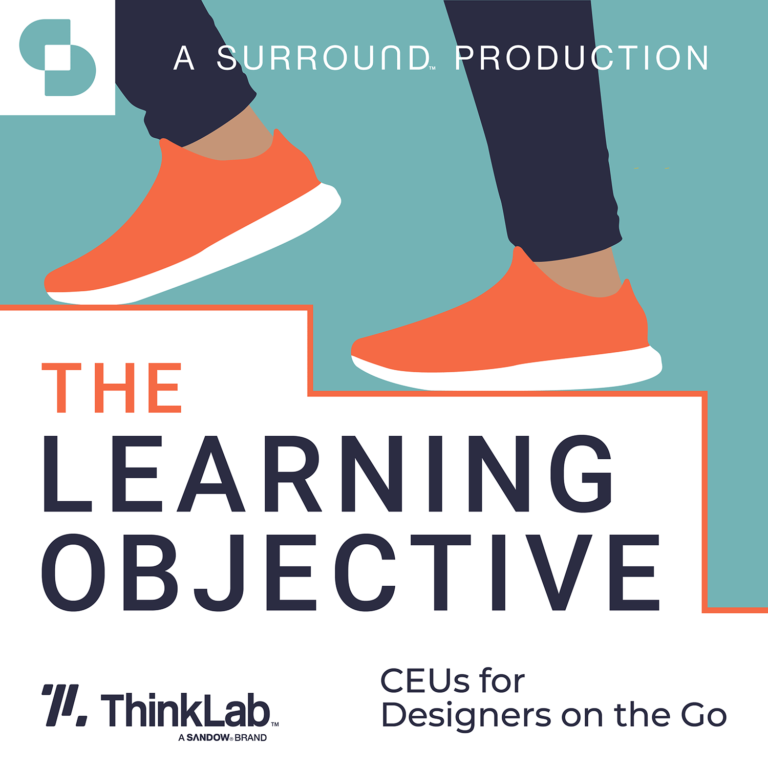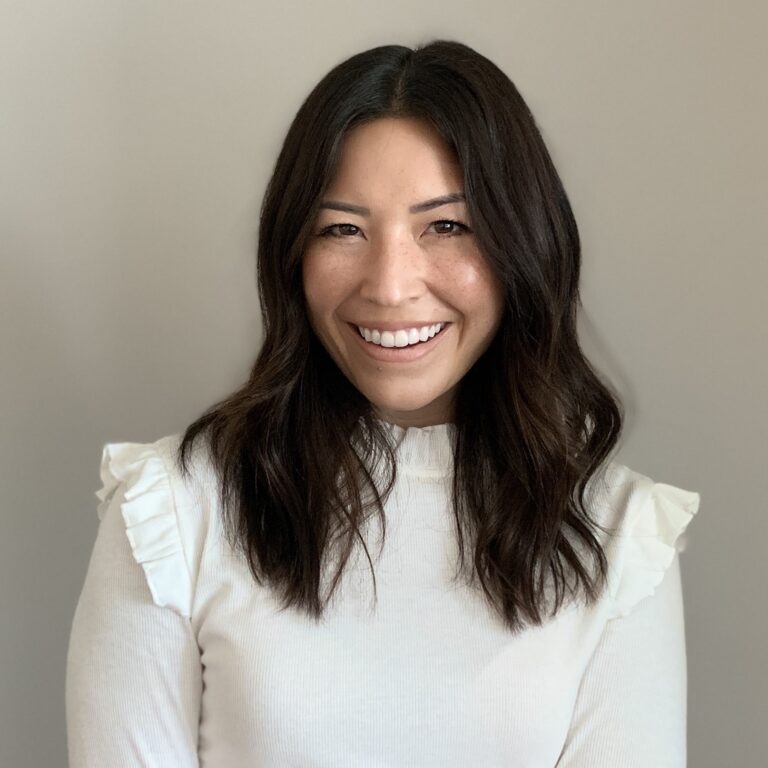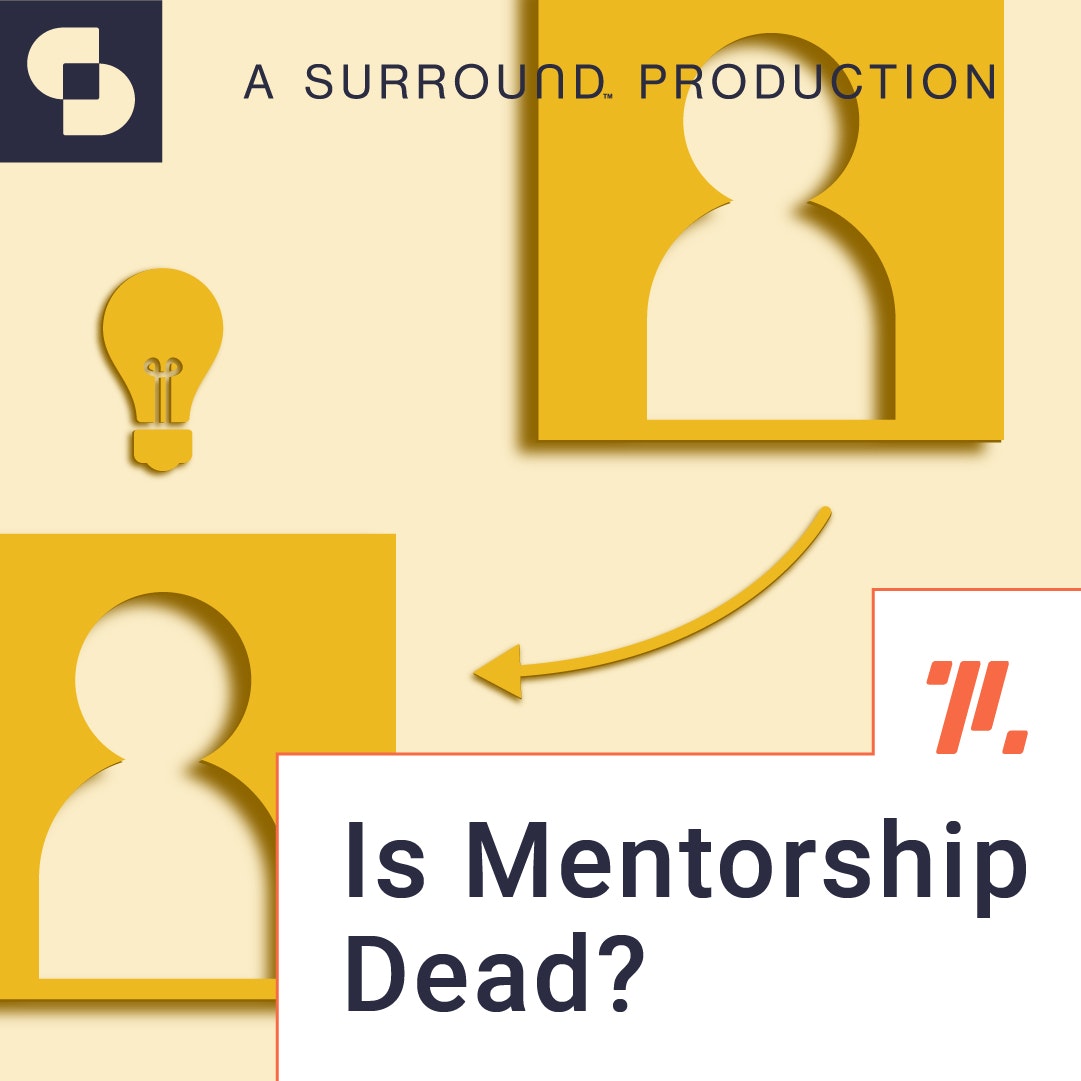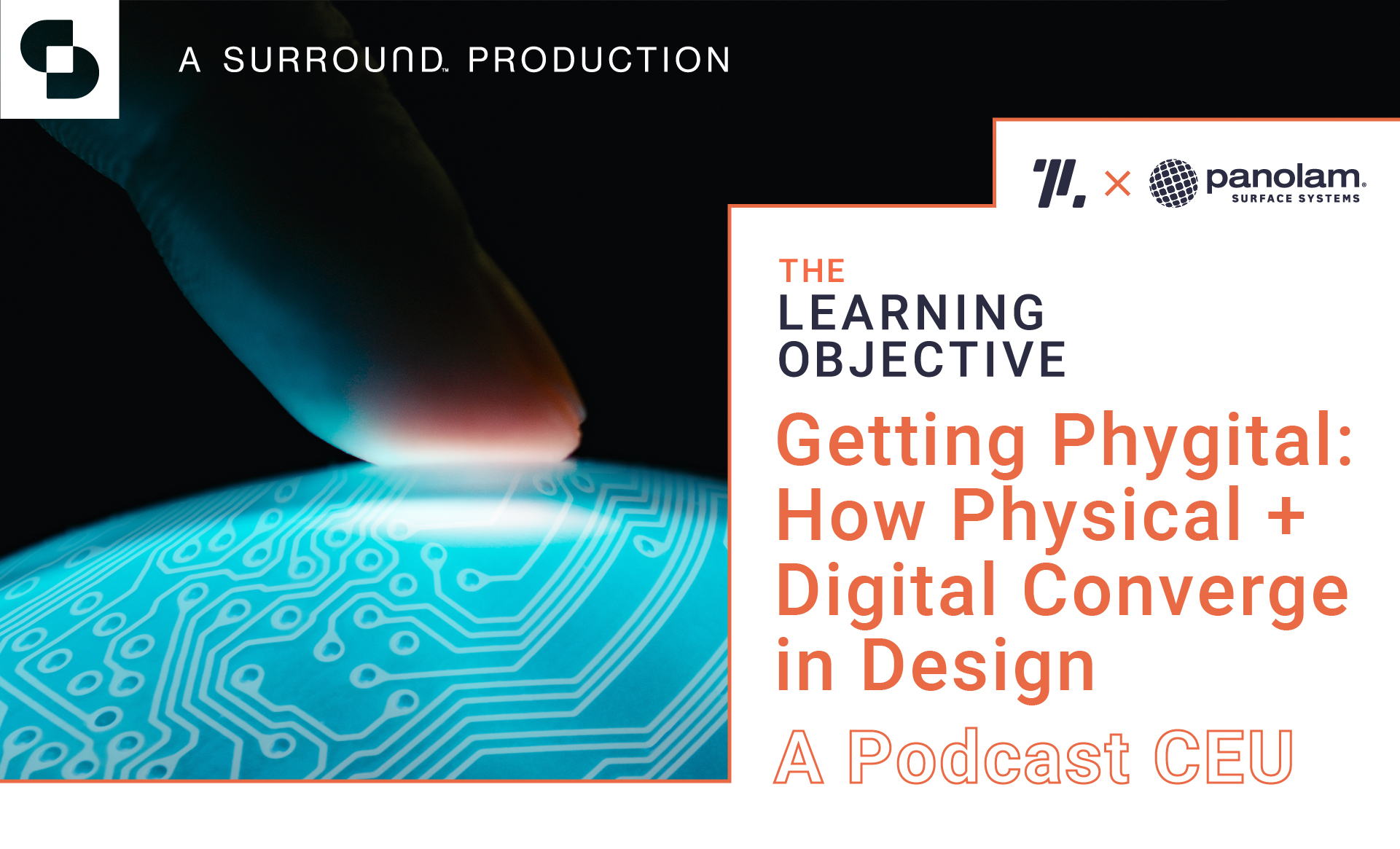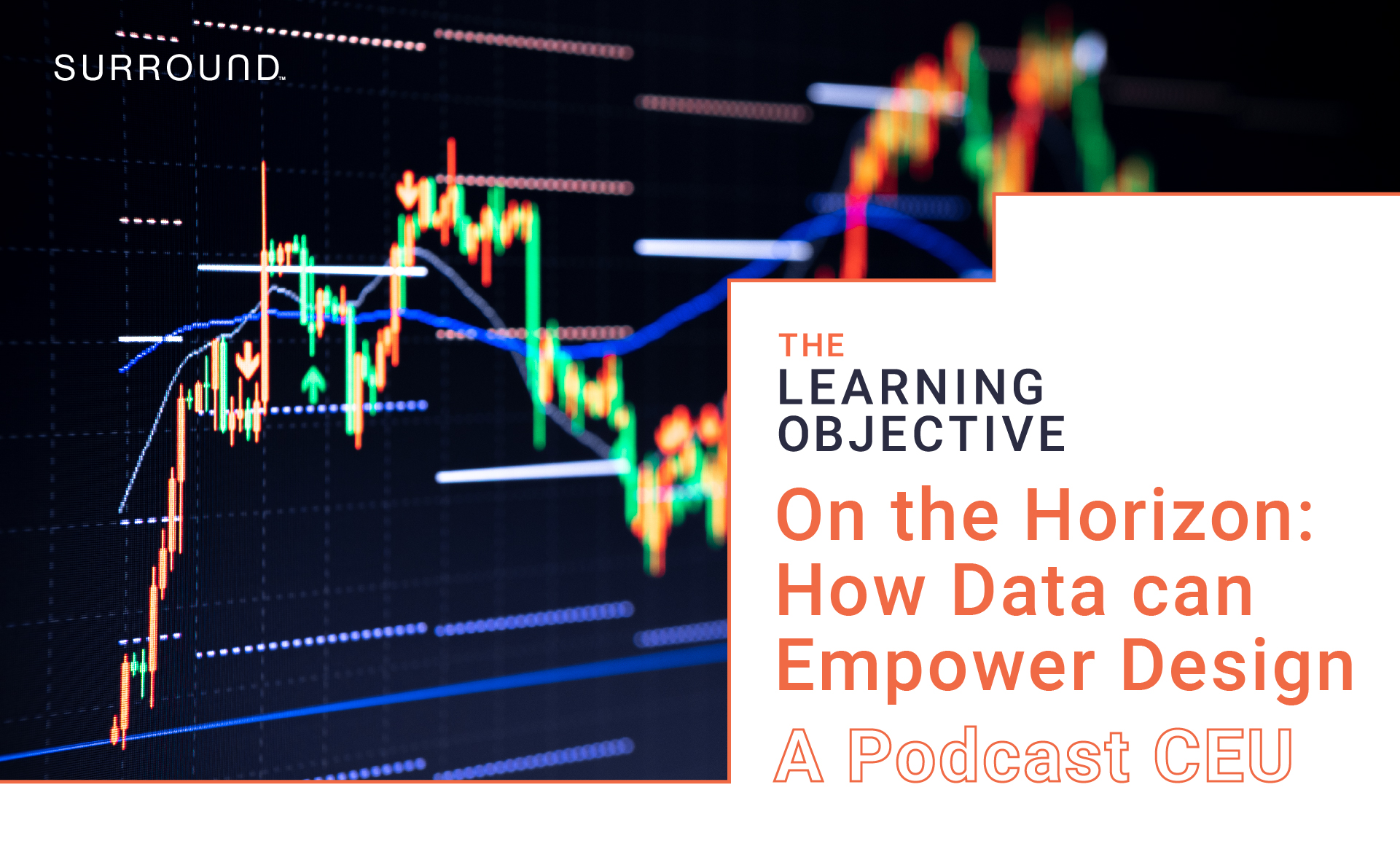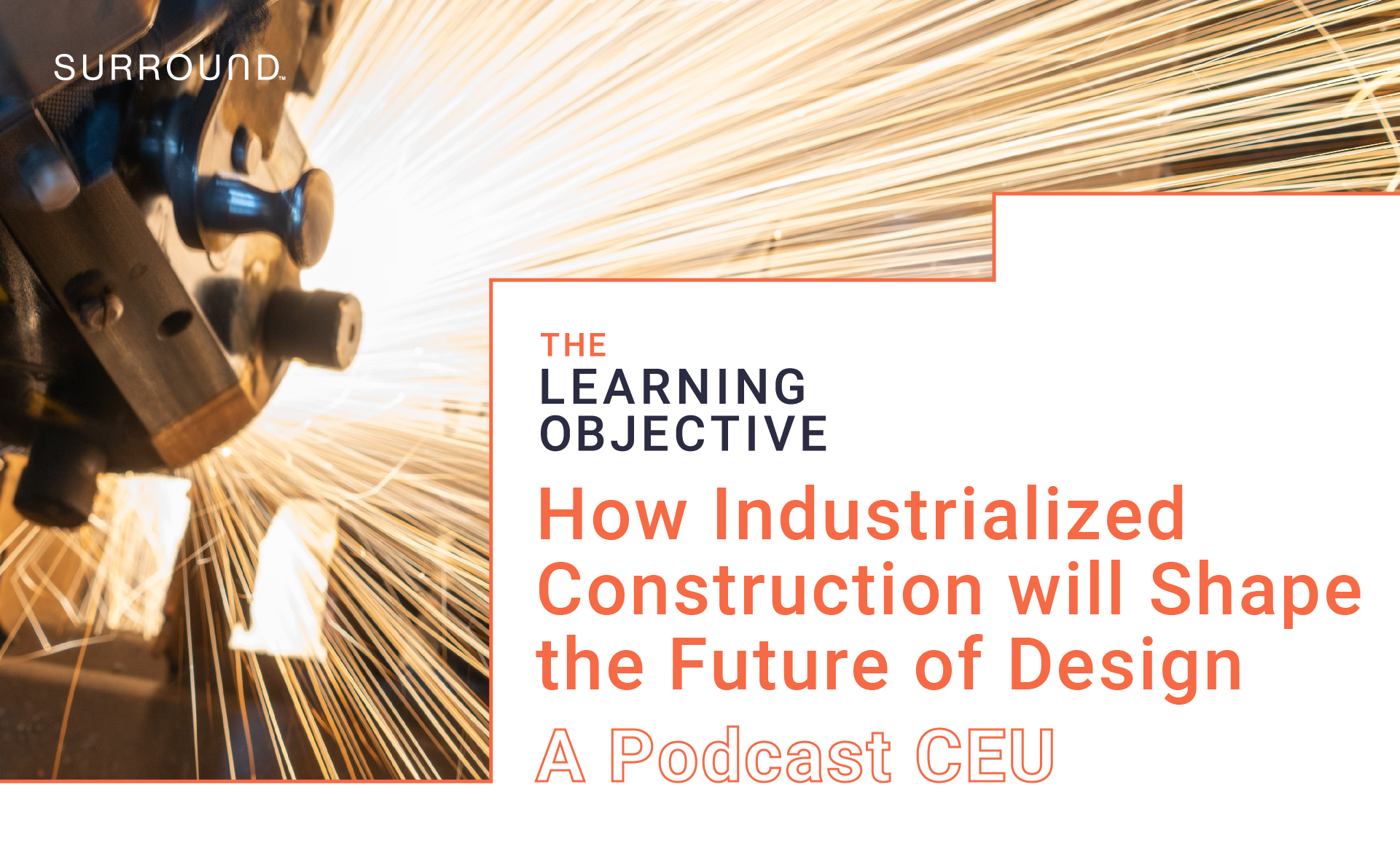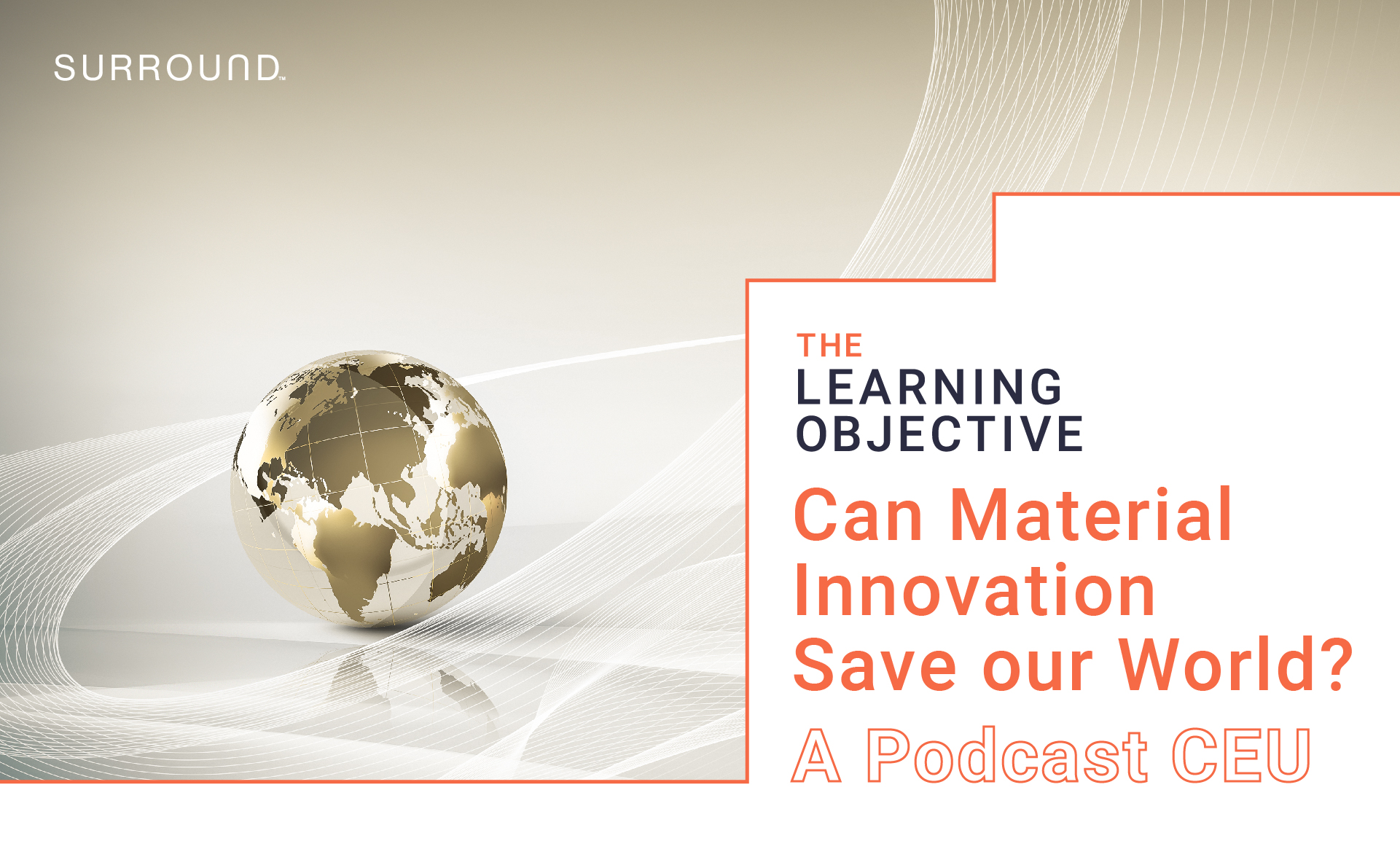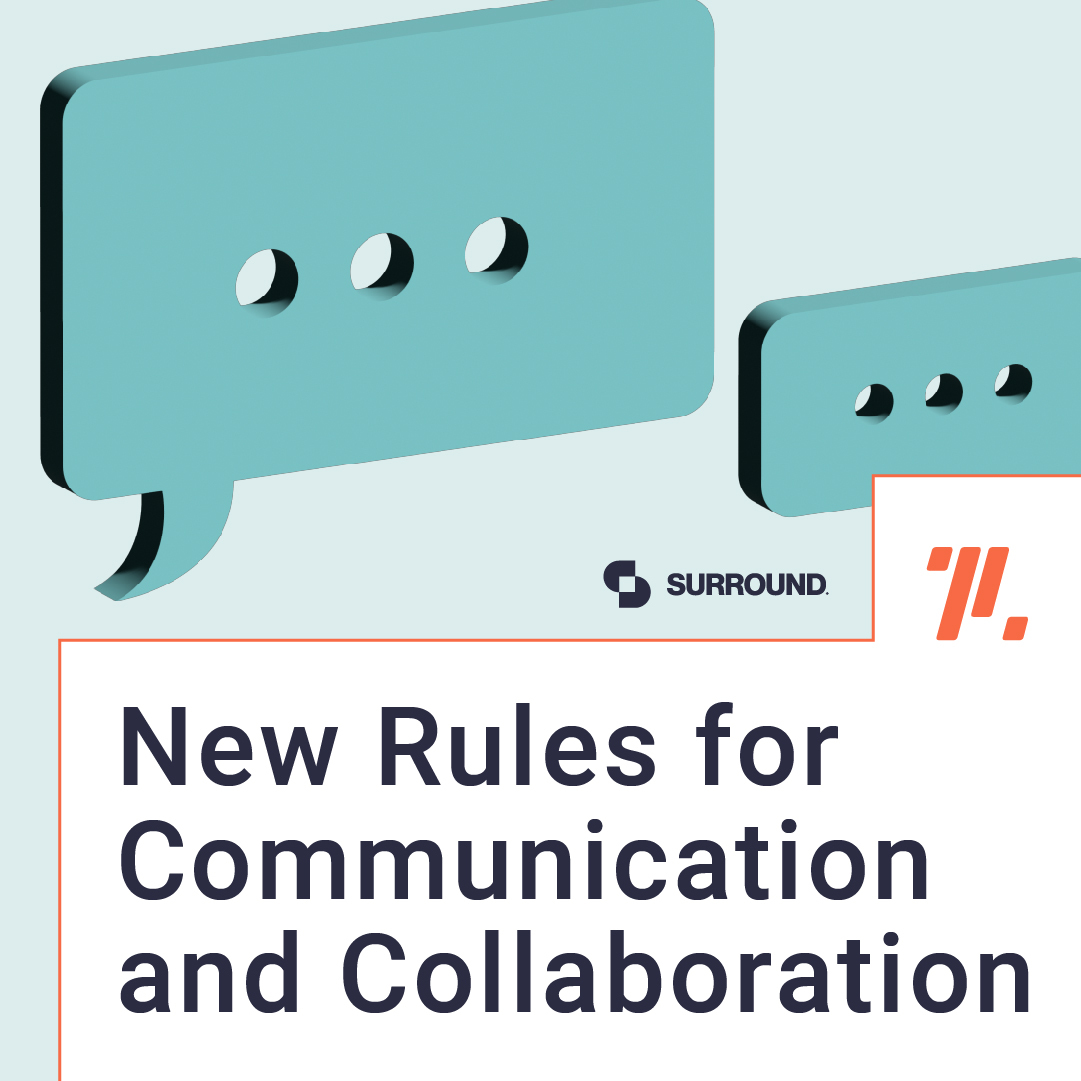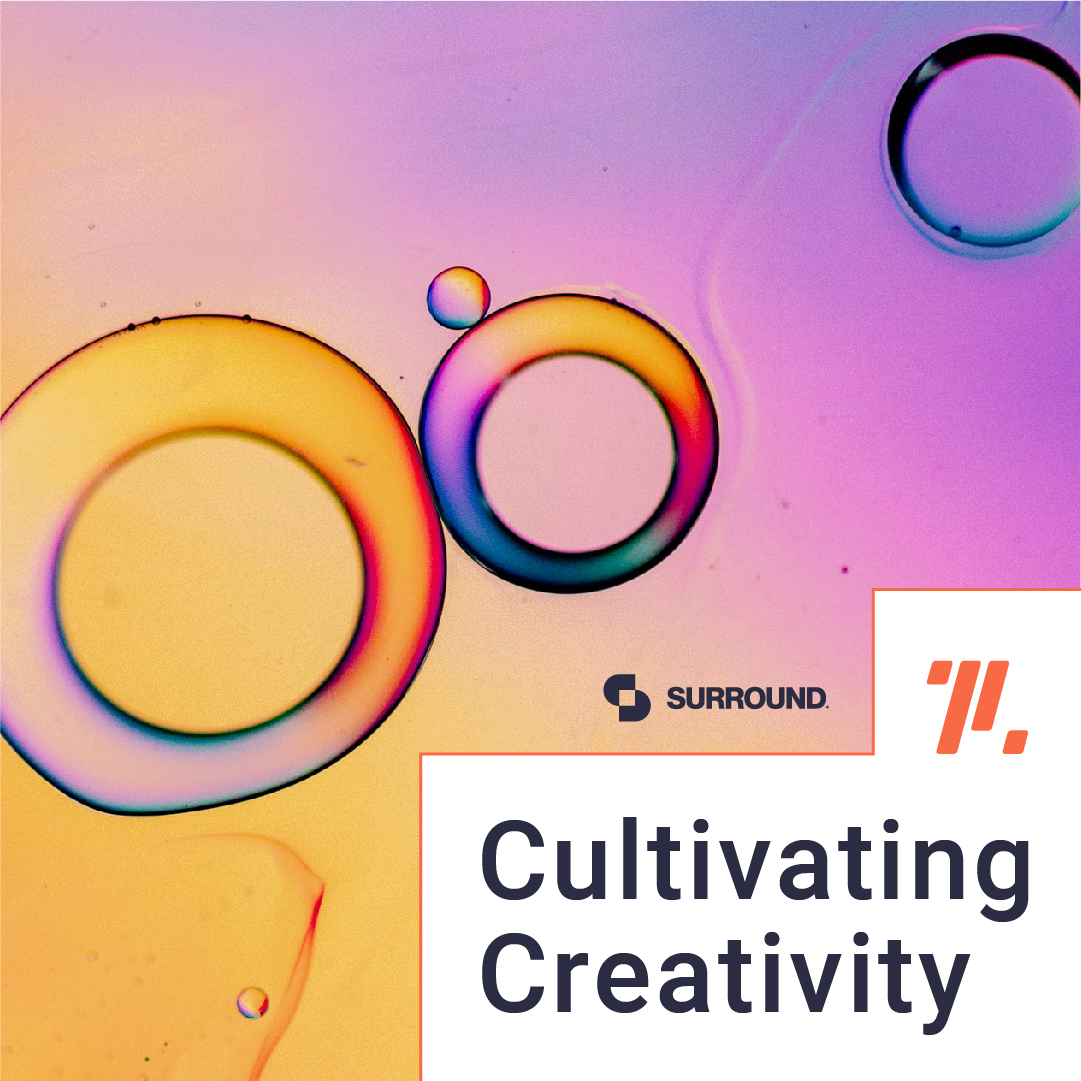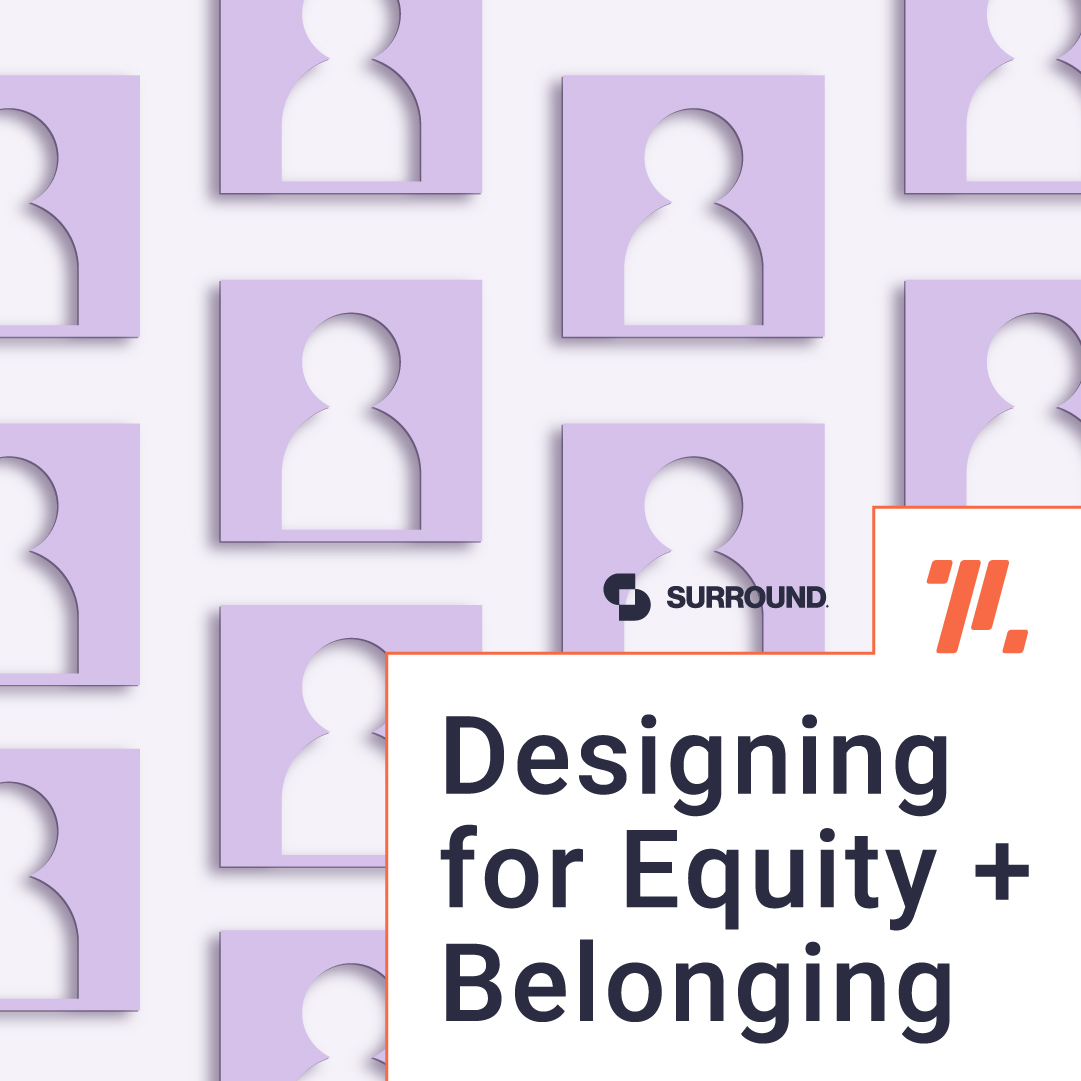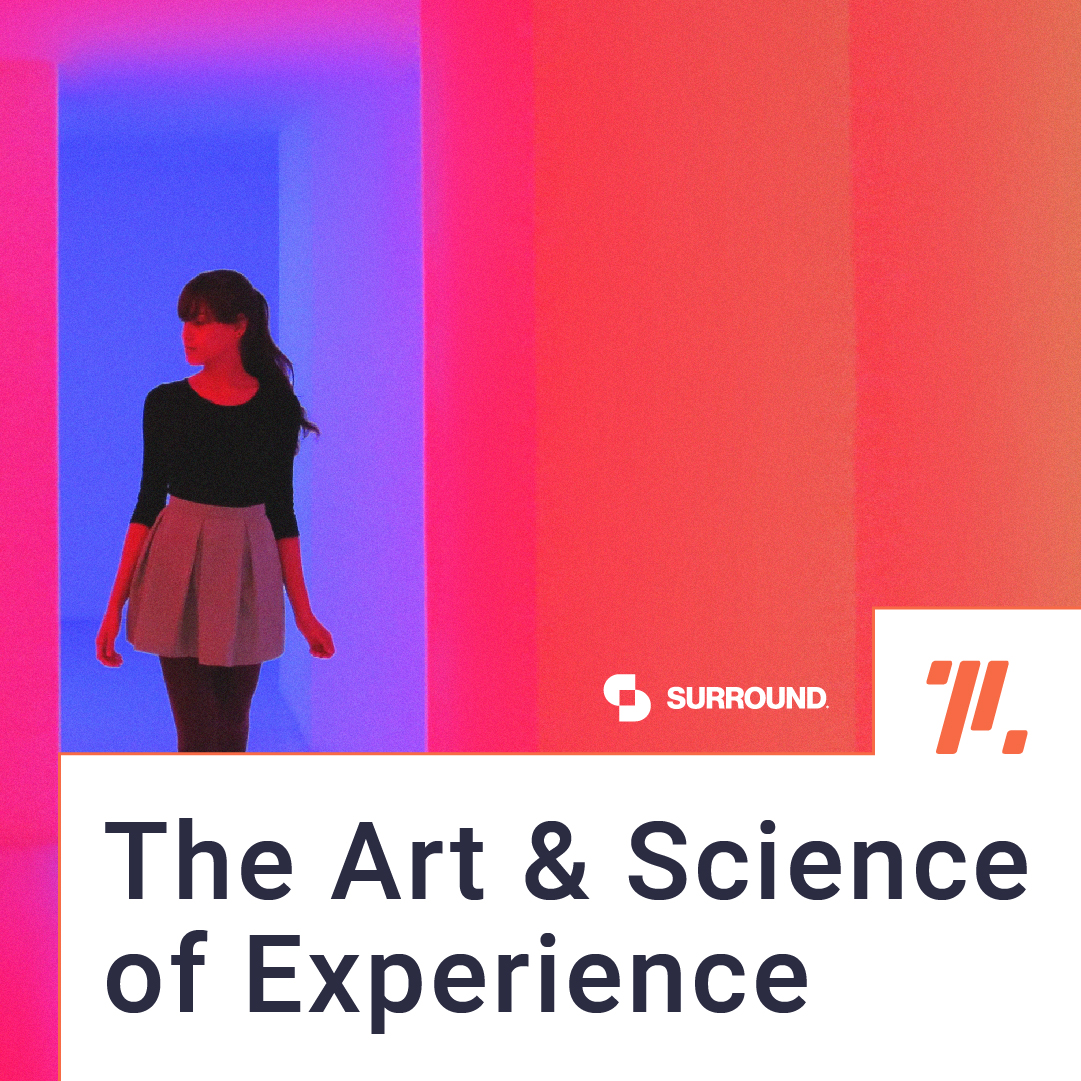In this episode, ThinkLab interviews Amanda Schneider, president and founder of ThinkLab, and Jessica Jenkins, co-host of The Learning Objective and part of the research and development team at ThinkLab. Together, they discuss the findings of this year’s design hackathon, sharing their aha moments. They dismantle assumptions about what other generations think Gen Zers want from their workplace — and use data and interviews to uncover what Gen Zers actually want, what inspires them, and how to capture their loyalty.
Accredited for: IDCEC | 0.5 CEU
Course number: 119305-1000
After listening, you will be able to:
1. Analyze how Gen Z is an arrow to the future of the design industry.
2. Contrast how the assumptions about Gen Z differ from what the data revealed.
3. Identify the five challenge areas for connecting with Gen Z.
4. Implement solutions for each of those five challenges.
In this episode, we dig into the findings of this year’s design hackathon, which included a survey of more than 1,800 designers, as well as more than 20 hours of focus groups on these topics.
Specifically, we focus on the following challenge areas: culture, creativity, relationships, loyalty, and learning. Each area revealed crucial ways in which Gen Zers differs from previous generations. This ranged from the practical, such as which way they prefer to communicate (no calls, please!) to the more profound: Gen Zers consider both physical and digital to be part of one unbroken experience, instead of two distinct and separate ways to work. Alongside these insights, Schneider and Jenkins describe concrete actions that firms can take to integrate Gen Zers and take advantage of their fresh perspective.
Quiz: Want CEU credit for listening? Click here to take the quiz, and earn your certificate of completion.
How it works:
Step 1: Listen to the episode.
Step 2: Visit this link to take a short, 5-question quiz.
*Scoring an 80% or above on the quiz will earn you 0.5 CEU.
Step 3: Upon passing the quiz, receive your certificate of completion. Look out for this at the end of the quiz.
Step 4: No need to self-report, the provider of this episode will do so for you.
A huge thank you to our Design Hackathon CEU partners who made this episode possible: Mannington, 3form, Allsteel, Material Bank, and Milliken.
Visit here if you want them to bring these insights directly to your firm or if you want to take the digital on-demand CEU course.
Connect with our expert guests on LinkedIn:
Meredith Campbell: By 2025, Gen Z is predicted to make up 27 percent of the workforce. Changes brought about by this generation will ripple up to all previous generations, affecting not only space design, but also how creative work gets done in the design industry. Today’s episode will challenge industry norms and perhaps some assumptions that you have about Gen Z.
ThinkLab brought together a cross-functional team to research the shifts and impacts to come as Gen Z enters the interiors industry, through their annual design hackathon, which is a six- month generative research project that tackles topics affecting our entire design industry.
Now, these challenges can only be solved by members from the entire industry ecosystem coming together. That includes architects, designers, manufacturers, commercial real estate, and end users. Special thanks to these research partner brands who are also deploying this CEU content: Mannington Commercial, 3form, Allsteel, Milliken, and Material Bank.
For today’s episode, I sat down with two leaders of this research from ThinkLab, whose voices probably sound familiar to you. Jessica Jenkins is the co-host of this podcast show. And you’ll remember Amanda Schneider as a guest on one of our past episodes of The Learning Objective. She’s also the host of one of the top podcasts for the design industry, Design Nerds Anonymous. While “podcast host” is certainly a title that both of them share, Jessica is also part of the research and content development team at ThinkLab, and Amanda is its founder and president.
I’m your host, Meredith Campbell. Today’s episode of The Learning Objective is approved for continuing education credit through IDCEC. Here are the learning objectives.
After listening to today’s episode, you’ll be able to:
- Analyze how Gen Z is an arrow to the future of the design industry.
- Contrast how assumptions about Gen Z differ from what the data revealed.
- Identify the five challenge areas for connecting with Gen Z.
- Implement solutions for each of those five challenges.
Here’s Amanda to start us off. Of all the topics they could have explored in their research, why did they choose Gen Z?
Amanda Schneider: We all know it has been a rough few years for each of us individually, for our industry, for our world, and we kind of remain in this weird state where the future is quite unknown.
Looking at some industry-specific statistics: From 2019 until 2021, the top 100 Interior Design Giants of Design laid off nearly 50 percent of their staff. But I’m pleased to report we were back to pre-pandemic levels as of 2022 — actually, just over pre-pandemic levels. So, we’ve very quickly gone from these intense layoffs, intense change, to actually turning down work because we don’t have the right staff at the right levels.
Add to that, with each one of these downturns, we risk losing talent — not only from our firms, but I would suggest also from our industry. We’ve seen the effect of the 2008–2009 downturn, of the 2001 downturn. We have missing gaps of talent, and a lot of those gaps are actually for the talent that we are struggling to find as we have more work than people to actually help us get it done.
Add to that, a lot of things have changed. And we are trying to figure out this change and the implications of that change for our own businesses while simultaneously ushering our clients through that change, which can be incredibly awkward. So, we decided to look to Gen Z not to stereotype them, but really to look at them as the freshest perspective coming into our industry, into our workplace, into our world, and to try to look at them as prototypes, not stereotypes.
I think sometimes when we say we’re studying generations, people kind of quiver a little bit (or maybe get a look like I have on my face right now, which is one of a little bit of disgust), because of something that we did to the millennials. I feel like we did a terrible job of really stereotyping the millennials, so ThinkLab chose to study Gen Z but definitely in a very different way.
Meredith: As they evaluated the survey responses of over 1,800 designers, they started to see patterns that they weren’t necessarily expecting. Amanda and Jessica share their biggest surprises. (And as you’re listening through this episode, take a mental note of what challenges your assumptions as well.)
Amanda: One of the most interesting things, especially as we look at this data — This data is industry-specific to us. You can read all of these things [that don’t apply to A&D], and we can often dismiss them and be like, “We’re so unique.” But this is, like, our industry. It’s research on our industry, so we can’t deny this.
We expected a lot of our data, as we compared by generation, to have an arrow to our future and trend up into the right: Picture a bar chart where each subsequent bar, each one to the right, gets a little bit longer, a little bit taller, and you can draw an arrow right across the top of all of them up into the right.
What we actually saw was what we’re calling a “Boomer-ang Effect,” which is that actually millennials’ answers tended to be some of the most extreme in a lot of our questions, whereas Gen Z actually tended to fall more in line with Gen X or even boomers. And there’s a great outside-the-industry article about “the Boomerfication of Gen Z,” talking about how Gen Z in a lot of ways does actually align with some of these more analog generations.
Meredith: The next surprise that Amanda noted was around the contrast between what Gen Z wants and what the previous generations think Gen Z wants.
Amanda: We did these intense focus groups with firm leadership, asking them, “Where are your challenges in recruiting, retaining, and mentoring Gen Z?” And then we brainstormed with those Gen Zers in that generative session: “How do we solve those? What do we need to understand from you?” And the contrast was really stark.
We heard a lot from managers about burnout and about how they’re feeling the weight of this new world and trying to create experiences that engage their young Gen Zers. And then, in contrast, what we heard from these Gen Zers was like, “Put me in, Coach.” Like, it was really loud. Like, they’re ready, more than any other generation, to jump in and take a part in this.
For example, in that mentorship conversation, many of them are already thinking, even though they’re only a year into their career, they’re already thinking about how they’re going to mentor the next generation.
Meredith: Third, Amanda noted that the Golden Rule no longer applies, or at least not in the ways we’ve previously applied it.
Amanda: So, this was something that really came up a lot. I think we’ve all been raised — at least [I have;] I’m a Gen Xer, for clarity. But we’ve been raised to think, “Treat others like you would like to be treated.” In some of our Design Nerds Anonymous podcast interviews, we bring back a more seasoned member with a Gen Zer from each of our top 10 firms that participated. What they say often — this is one of the biggest things that surprised me — are [about] some of these communication methodologies and how Gen Zers say, “I’d rather chat. I’d rather text. I’d rather communicate in that way. Please don’t call me.” And our more seasoned professional was saying, “Man, I just want to have a phone call, because it’s more efficient.”
Nobody intends to offend anyone else, but [it’s about] really looking at our own personal preferences and recognizing that those might not be everyone’s. And we can probably engage one another more if we literally abandon that Golden Rule and really try to listen a little bit more.
Meredith: And here’s Jess with the fourth surprise that the research revealed. This may be my personal favorite.
Jessica Jenkins: [I was surprised by] this fluidity of digital and in-person
I think we know that Gen Z is a digital-first generation. But it was funny because every time we asked, “Can you give us some in-person solutions that your firm could try when you’re together in the office?” And they would immediately talk about a digital tool that they could use while they’re all together in the office. And when we asked for digital solutions, it was “When we’re together, we can use this digital tool.”
So it was really this, like, fluid conversation. And I don’t think that they separate the two, and it was very apparent that [blending] digital and physical for them is just living. There is no separation of those two. And to get their job done, they need both, and it’s not a this or that. So I think that was very apparent to me.
I think they even said it when they were talking about communication. Going back to what you said, Amanda, I know one of them said, “I don’t think about TikTok, Instagram, and messaging my friends on those channels as digitally connecting. I just think of it as my relationship with them.”
So I think there’s even this framework that has changed, and it was really good to hear that, that they don’t think about it maybe in the terms that we have previously.
Meredith: And fifth was all about values.
Jess: When we asked about values, I think we were really looking to hear about specific organizations or nonprofits or project types, and [instead] it really came down to “What am I contributing, and how do I feel valued by my firm?” And it was less about a specific type of contribution and more about this individualized contribution. So, I think it really goes to this individualization of this next generation.
Value to them was more about being trusted, feeling like they’re contributing value and adding value more than a specific mission or goal of that firm. So it’s really this individualized value purpose, which I thought was really interesting.
Meredith: And lastly, Jessica shares how their perspectives truly felt fresh for our industry.
Jess: And then I will say, overall, what I thought would be their solutions weren’t their solutions, which was so refreshing. It just truly felt like fresh perspectives coming into the industry. Even when we went over creativity, that was a big aha. We went in thinking, “They’re going to give us all these tools and solutions,” but really, they were going to change our whole framework around how we think about this whole topic. So, lots of truly fresh perspectives, which was really great not to have them be our own ideas, but really be these fresh ideas.
Meredith: Now, Amanda and Jessica give us a peek behind the curtain into what they uncovered in over 20 hours of research focus groups.
Jess: This is where it gets really fun to me, because I think you go into these sessions and you go into this research thinking, “OK, what are the biggest challenges? Do we know some of them? How can we solve for these?” And we hosted 10 mapping sessions with over 35 firm principals from top 10 Interior Design Giants of Design firms. They were from across the country — we hosted these virtually with a Mural board, but we got to have very unique perspectives because everyone was coming from across the country.
We started our workshop sessions by asking them what the biggest challenges are in recruiting, retaining, and connecting with their talent across all generations. And it was interesting because a common theme came up around hybrid work and really that lack of being in the office, the way things were, the things we were used to doing when we were always in the office together — really those challenges around hybrid when it came either to digital or not being in the office together.
We truly saw trends appear really quickly, or common concerns and common challenges appear really, really quickly, bucketing into almost two different phases. First, this real concern of not being in the office and how that relates to the values and purpose of the firm, how that relates to learning by osmosis, how that relates to loyalty and displaying what the firm is all about. And, kind of in conjunction with that, there was this real concern with digital. We understand that this is a digital-first generation, but there is a real concern of “Are they too digital-first?” especially when it comes to product exploration, creativity. So I think those themes arise really quickly.
And then the third part that I thought was really interesting was this eagerness of these firms to understand the next generation. There was a genuine desire to understand what Gen Zers value, what purpose from a firm they want to align with. And I think that was really refreshing, to hear such top leadership say, “We really want to know what they want to know about how they feel connected, how they feel loyal.” And I think there were a lot of question marks around that.
Meredith: After more than 20 hours of focus groups (coupled with the survey data that we mentioned earlier), ThinkLab distilled them down to five main challenge areas, or topics, for connecting with Gen Z. Amanda and Jessica are going to walk us through the findings of each of these topics and share a couple of ideas for each that you could implement in your firm, tomorrow.
The first was all about culture.
Amanda: If we picked one topic as an overarching umbrella for all of these challenges and ideas and solutions, it would be culture: “How do we improve this culture? How do we really embrace this hybrid era that we’re in to help it happen?”
And what we heard often is that it’s harder than ever to build culture in a hybrid era. That was the challenge that was set up. But I think we went into this with the assumption that maybe these digital-first generations don’t want to come into the office and kind of, again, that it’s harder to create a cohesive culture in hybrid.
But the reality, I think, where we ended up was this recognition that the office is definitely just one tool in our culture tool kit. And that while it definitely feels more difficult right now, we’ve literally had hundreds of years to build culture face-to-face in an office with desks, and it’s new to create this cohesive culture in hybrid. So, it means — back to Jess’ word “ground rules” — that we’ve really got to look at some of those new ground rules and really have open discussions about them and fix them.
So, I’ll bring up one of the more shocking moments of our research, when we were talking about how hard it is to create culture in hybrid. And one of our young Gen Zers boldly said, “Hey, I don’t want to speak out of turn here, but I have to say, everyone keeps talking about how hard it is to build culture in hybrid. It’s not hard for us. This is not an issue for us. This is a change management issue for those older generations.” Which kind of stings. Again, I mentioned I’m a Gen Xer, so it stings a little bit, but I do think that this is a change management issue. And another favorite saying at ThinkLab is “A fish doesn’t know it’s in water, it’s just swimming.”
So, as we talk about those ground rules and really reframing those ground rules, I think as we dig into this research around culture and some of the ideas that came up, I think it’s a chance for all of us, of all generations, to check our assumptions and our previous realities at the door to say, “Maybe this was true, but does it have to be for the future? And is that the best way for us to move forward?”
Meredith: For the topic of culture, there were two big ideas that came out of the research sessions. First, a “cameras on” culture.
Jess: Now it sounds really basic, but that was a big aha for us. And that came out near the end where one of the Gen Zers literally said, “I feel so much more connected to this team and to this group because we are cameras-on. There are clearly laid-out rules. There was this level of safety and trust that we established from the get-go, but I get to be seen and heard.”
And even if that’s virtual, there’s this really new, documented social norm of this cameras-on culture. Not that it’s a cameras-on-only culture — that depends on your culture. Documenting and framing up what your culture is (especially when it comes to communication tools and communication norms), I think really sets your next generation up for success, and it sets your teams up for success for how they communicate and trust one another.
Meredith: Idea number two is to create a culture committee.
Amanda: This is one of my favorite ideas that came up from our Gen Zers and these brainstorms. We’ve titled it “Create a culture committee,” and then “committee” is crossed out, and it’s replaced with the word “community.” So: “Create a culture community.” And basically, what this culture community is, is a forum for sharing passions and translating them into activism on behalf of your organization. It should be led by maybe some fresher entrants to your firm, but definitely supported from the top down by leadership.
And I think one of the things that’s so insightful here is just even our choice of words. “Committee” is a word that probably makes you roll your eyes a little bit. “Oh, here we go. ‘Committee’ sounds boring. I’m going to go to a lot of meetings. Nothing’s ever really going to happen.” But we had a really interesting aha from one of our other Design Nerds Anonymous interviewees this season: a woman named Hannah Grady Williams, who has a fascinating TED talk. When she talks about connecting with Gen Z, one of the things that she recommends to all other generations is to ask them what communities they’re a part of.
And what’s super interesting is that the week that I had that interview with Hannah, I got a paper home from my youngest son who is in third grade. And it had “community” as one of his vocabulary words, defined as a geographic place where people reside. And I thought, “How different is it?” Because again, back to some of Jess’ points about this digital–physical fluidity, in this era that we’re working in, the communities are a group that they belong with, that they identify with, that they feel a part of.
So, how do you create a culture community that everyone in the firm — maybe from different backgrounds, different ages, different perspectives — feels connected to, and then empower them to put some of these ideas into action?
Meredith: The second topic is creativity.
Jess: This one was one of my favorite ahas throughout our research. When we heard from firm principals, it was really this challenge of “We’ve learned how to solve for collaboration. We’ve figured that out, but we have not solved for innovation, ideation, and creativity.” And this was a big concern that we heard from the firm principals in our mapping sessions.
And they were also afraid of these digital tools and digital-first, self-serve tools like Pinterest, which can help speed up some of that research process, but start to make everything look the same. [They were concerned] that we’re maybe negatively impacting our creative thought process by turning to these digital tools so quickly. So, there’s this true concern.
So, when we turned to our Gen Zers, I really thought we’d hear about some fresh, new tool ideas, some digital inspiration, and some great physical locations to go explore. But, coming back to [this idea of] digital–physical fluidity, we didn’t hear anything regarding digital or physical. And what we heard instead was this issue around the time drought around research, around creativity, around creative exploration. And I think that was a really big aha for us, because it was less about whether you’re in person or whether you’re digitally self-serving and more about this time drought around creative exploration.
Meredith: For the creativity topic, Amanda and Jessica have two ideas for you to try. First, define creative time.
Amanda: I may be Captain Obvious by delivering this message, but we heard this from a lot of our Gen Zers: “I always feel rushed, and I don’t even know how much time I should be spending. It’s so easy to go down a rabbit hole.”
So, the simplest suggestion they came up with was “Help me put guardrails on my creative research time so I can learn how to balance this creative element with true productivity.” So, it could be that you have 20 hours here, you have 100 hours here, you have 2 hours here — whatever that time limit is to just help them understand what is a normal amount of time to spend, because many of them were really struggling to understand some of those basics.
Meredith: The next idea for you to implement is to create a pro-idea environment. Jessica explains what that means and why it’s so important for creativity.
Jess: There was a lot talk around safety. So, creating this truly pro-idea environment. And a lot of the Gen Zers said, “As a new designer, you want to put your neck out there and give your good idea.” And as long as it’s, it’s received with a ‘Hey, that’s a great idea, but it may not work for this,’ as long as it’s received with this safety environment, that creates positive psychological safety around creativity.
And even as we looked outside of the industry for [more about] that safety issue, Future Forum talks about this need for psychological safety in order to spark creativity, in order to create that creative innovation. They were really onto something with this safe environment for sharing new ideas, for spreading new ideas among their teams.
Meredith: The third topic the team researched was relationships, and they wondered, “Do face-to-face relationships matter as much in this digital-forward era?”
Amanda: Our overall conclusion is relationships still matter, but how we build trust is evolving.
The assumption that we went in with was that digital-forward generations maybe don’t value face time as much as previous generations. And they think that trust and culture can be built wholly virtually. But after going through this [research], what we found is that digital-forward generations do value that face time, but they expect it to be worthwhile. They want digital tools to enhance trust and culture, but still really rely on in-person networking to make those connections.
This is a big one for me. Because when I say “the Boomerfication of Gen Z” and that Gen Z actually wants to go back into the office, I see the reactions, and it feels like a big “Yes, we’re going back to normal.” Like, “we got a good one, we got a good generation.” And the reality is, yes, that is true, but their normal is going to be different than the 2019 normal. And I don’t believe that the 2019 normal is the best that we can do. So, the good news is people still want to do business with people, but we have some things to work on.
As we dive into this relationship chapter, one of the other things that kind of shocked me is that 85 percent of our audience said that relationships within their company, and building those relationships, are very important. And this was actually the most true for Gen Z. However, we saw that 61 percent of architects and designers say that relationships within the broader industry are important to build. And this was least true for millennials, which tended to be that more digital-forward generation. So I think we’ve got a lot to look at within our firms. We also have a lot to look at with our product partners and creating these partnerships that can really strengthen this. And as we talked about in the beginning, a lot of this comes down to communication.
Meredith: The ideas for relationships revolve around cross-pollination. Jessica shares what the research revealed about cross-pollination within the firm.
Jess: We heard from Gen Zers that they want to get connected to other people within their own organization. So, whether that’s an architect getting involved with an IT person or an IT person getting involved with a designer, they wanted to meet and cross-pollinate ideas among one another.
So there’s this true idea of collaboration and ideation within the firm, in person and also when they’re meeting digitally. Could there be a digital forum where they share good ideas and really cross-pollinate that way? Doubling down on wanting relationships within their own firm was really big.
Meredith: Next, cross-pollination as it relates to our broader industry.
Amanda: There was a curiosity, especially by our Gen Zers. Remember when I read that 61 percent, it was most true for millennials. So there is a curiosity, especially by our Gen Zers, about this broader industry, about cross-pollination, understanding different roles and what’s happening there, and also cross-pollination across different geographies.
Meredith: And the last idea related to relationships is frequency over formality.
Amanda: This is one that was just really loud from our youngest participants in this industry.
The idea is: “Just give me frequent and genuine feedback, both good and bad, but give it to me on the spot, in the moment. Don’t wait for an annual review, for sure, or even a quarterly review. Like, I really want to hear from you that real feedback, it feels more authentic to me. I feel more valued that you’re trying to develop me.”
And there was definitely a pushback over formality. I think we’ve all had these awkward interactions, so that’s why we say frequency over formality [when it comes to feedback]: “Give it to me. Give it to me straight. Give it to me in the moment. We’re friends.”
Meredith: The fourth topic: loyalty.
Jess: Loyalty came up in our “Values and Purpose” conversation. So it wasn’t, like, a topic called “Loyalty” — it was a topic called “Values and Purpose.” And when we asked them what would keep them at a firm, it came down to that contributing to value and feeling valued and respected.
In our mapping sessions with the principals, there was this true concern around how to build loyalty: “Is it even possible? How do we retain our talent? And how do we create a culture where people want to stay?” They were concerned not just with Gen Zers being loyal, but really millennials and Gen Xers and their whole firm: “How do we create this sense of loyalty, and is it possible?”
And in our first session with Gen Z, we heard, “I want to myth-bust this whole loyalty thing. It’s not that we’re not loyal, it’s that we need a reason to stay.” And they even went further to say, “Traditionally, those 2.5 percent raises worked, but with the rapid inflation we’ve seen over the past few years, that just won’t work [anymore]. And I’m being pinged daily on LinkedIn with an offer with a 10 percent raise. Now, I want to be loyal to my firm, but I also need to survive.”
And I think that’s this real concern. And even when we looked at the broader scope of the industry, the number one reason — across the industry, across generations — that people said they would leave their current role or firm was for a higher pay. So it wasn’t just Gen Z. The sentiment really rang true for all generations.
And what I love is, as we dug into this a little bit more, that we had this assumption that Gen Z isn’t loyal. And what we found is Gen Z isn’t blindly loyal. They need reasons to stay, and they do have access to information that help them make decisions, but also gives them a lot of exposure.
I thought it was interesting, as we heard from one Gen Zer, their biggest fear is “When’s the next recession, and when will I get let go? Or will I be able to stay with this firm?” So, they won’t be blindly loyal. They do need that kind of transparency from the firm as well.
Meredith: An idea for inspiring loyalty: success planning rather than succession planning.
Amanda: One of my favorite moments overall was, in one of our leadership calls, one of the leaders that was elected to join that particular session happened to be a young millennial. So she was definitely a leader, but she was younger than most of her peers in that conversation. And we talked about this idea of succession planning. And when we said that word, she literally grimaced. Her face went into this contortion, and I was like, “Whoa, I saw that. Can you talk about that a little bit?” And she was very vulnerable and said, like, her reaction to the term “succession planning” was very negative.
So then, fast-forward to our Gen Z brainstorm sessions and I brought up the same term, and the whole room grimaced with the same grimace and the same negative reaction. And so I asked them about that, and in explaining her reaction to it, one of the participants accidentally Freudian-slipped and said “success planning,” rather than succession planning. And the minute you shifted that terminology from succession planning to success planning, all of a sudden it was like the whole room took a big sigh of relief.
The idea that came up was to shift from succession planning to success planning: “My personal success planning is the new business succession planning. And if you focus on my success, it will create that loyalty and it will actually make me want to stay.” And I’ve had some great follow-up conversations with some of our sponsors on this, who have very robust succession planning tools in their own business. And one of the concepts was: “If you prepare me for my next job, whether it’s with your company or not, that actually counterintuitively creates loyalty.”
And that can be a tough concept to rethink and unlearn, but it was very loud from these Gen Zers. So, ironically, if you have that attitude of “constantly preparing me for my next job, whether it’s with your company or not,” it actually breeds loyalty.
Meredith: Next idea for loyalty? Extreme transparency.
Jess: We heard that the quickest way to build a lack of trust, or distrust, is not having transparency around your pay structure. We heard it from Gen Z multiple times: “I learned what my colleague was making because we talk, and that’s the fastest way for me to not feel respected and to really create a distrust with my company.” So, know that they are talking about how much they’re making. Extreme transparency around pay is really, really important.
Meredith: And the fifth and final topic is learning.
Amanda: The assumption going in is that Gen Zers are missing out on learning opportunities by not being in the office. We extensively researched this. It was a part of our survey, and what we found was Gen Zers are extensively missing out on learning opportunities by not being in the office. So that one was definitely an assumption that really was validated. But there’s a but.
But we have to invent new ways to give them access and exposure to empower these advocates. And this may entail digital self-serve tools, instant connectivity to other humans, and maybe even mentorship a little bit earlier on.
One of our Gen Zers who joined us on Design Nerds Anonymous was saying, “Today, we do have to go into the office. We do have to go into the office because we haven’t reframed our workflows for a digital era. We’re still built around an in-person era. We’re still built around mentor–mentee, this top-down relationship. So, until we reframe these workflows, our only option is to return to the office.” But she was also gently and respectfully challenging us to really start to think about some of those tools and some of those processes and how maybe we can reframe them.
Meredith: One idea to implement from the topic of learning is the buddy system.
Jess: One of the ideas that came out was really making mentoring a group task, along with this kind of peer-to-peer, buddy idea. So Gen Zers said, “It’s nice to be connected to a peer, where I can ask maybe even the ‘stupid’ questions, where I feel safe and I can really build that relationship, but also ask them a lot of questions so that I’m not burning out my managers. But we’re really spreading that knowledge and spreading that information across the entire forum.” So [it’s about] making mentoring more of a group task and not a top-down, teacher–student method.
Meredith: The next idea was “Let me self-serve the easy stuff and direct-connect the hard stuff.”
Amanda: I feel like this was the loudest thing to me when it came to the tangible ideas that came out of this learning: “How do I learn if we have to reframe this learning by osmosis? What does that look like?” What we heard loud and clear from our Gen Zers was “Let me self-serve the ‘easy’ stuff, and then help me get directly connected with the harder stuff.”
So, in their lives as consumers, in their lives in every other way, they are empowered through Google: to just Google it first, to find something on YouTube. Actually, one of the things Ryan Jenkins said [in his hackathon keynote speech,] was that, outside of friends and family, the number one place Gen Zers go to find out about the culture of a new company they’re thinking about joining is YouTube.
Now, this wasn’t true for our industry. Our industry is not going to YouTube. But this is one of the chicken-or-the-egg things, because there’s not a lot of content from our industry out there on YouTube. So I want to challenge our industry, whether you’re thinking about product learning — it could be on YouTube, it could be video — but how do we create kind of these searchable, self-serve ways for these Gen Zers to be able to find the answer themselves? And then, how do we direct-connect them?
Jess talked about the buddy system. Jess talked about earlier mentorship, maybe more informal mentorship. And the idea of the buddy system was connecting someone who’s maybe just a few years ahead of them. So, not to a senior person per se, but someone who feels like a peer that maybe is on a similar level. How do we make a safe space for them to connect with humans? So, self-serve the easy stuff, and then direct-connect the hard stuff.
And I want to be really clear here when we talk about direct connect, this is not a formal across-the-table mentorship moment. This is “Who is my buddy that I can text, that I can Slack, that I can message in a Teams channel to get a quick answer?” Self-serve the easy stuff, and direct-connect the hard stuff.
Meredith: And finally, the last idea for the topic of learning: Flip the script.
Jess: “Flip the script” was this idea of looking to your outside manufacturers and outside partners. So, instead of the traditional approach of “Whoever wants a breakfast slot presentation, raise your hand; whoever signs up, gets one,” you create a list of what technical skills, what product skills, what sustainability information [you’re missing], and really looking at those gaps of what your team needs to learn about, then throwing that out to the manufacturers and seeing who is able to fill those.
So, flipping the script on those breakfast presentations, and we thought that’s a great way to make sure that your teams are getting the information that they need, using that precious time a little more intentionally. And also filling that education gap so it doesn’t burn out your managers.
Meredith: While this is the end of our episode, this isn’t the end of the conversation. If what you heard today left you hungry for more on Gen Z’s impact on the design industry, here are four paths to dive deeper.
First, if you’d like to bring these insights directly to your firm, go to this page to reach out to any of these research partners who are deploying this CEU content: Mannington Commercial, 3form, Allsteel, Milliken, and Material Bank. Second, if a digital, on-demand CEU course is more your speed, go to this pageto access that through any of those research partners. Third, check out Season 5 of Design Nerds Anonymous, wherever you listen to your podcasts. Amanda will dive into each of these topics even further with fascinating interviewees. Lastly, reach out to us at ThinkLab if you’d like our team to facilitate a workshop or speaking engagement to help you apply these insights to your company, whether you’re a firm or a brand.
I want to take a moment to highlight one of our research partners who made this Gen Z design hackathon possible. Mannington Commercial crafts a full range of flooring products to inspire your creative vision, fit the performance needs of your spaces, and meet your sustainability goals. Ultimately, what Mannington Commercial is crafting is not only a product, but a partnership.
Thanks for listening and learning with us today. To receive credit for listening, click on this link to take a short quiz. That’s it. The Learning Objective is a SURROUND Podcast Network original production. Check out more shows from SURROUND at surroundpodcasts.com.
This episode of The Learning Objective was produced and edited by SANDOW Design Group. Special thanks to the podcast production team: Hannah Viti, Wize Grazette, Samantha Sager, and Rachel Senatore.

